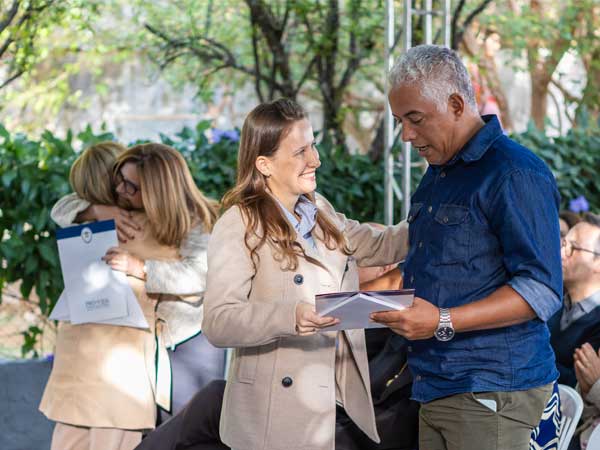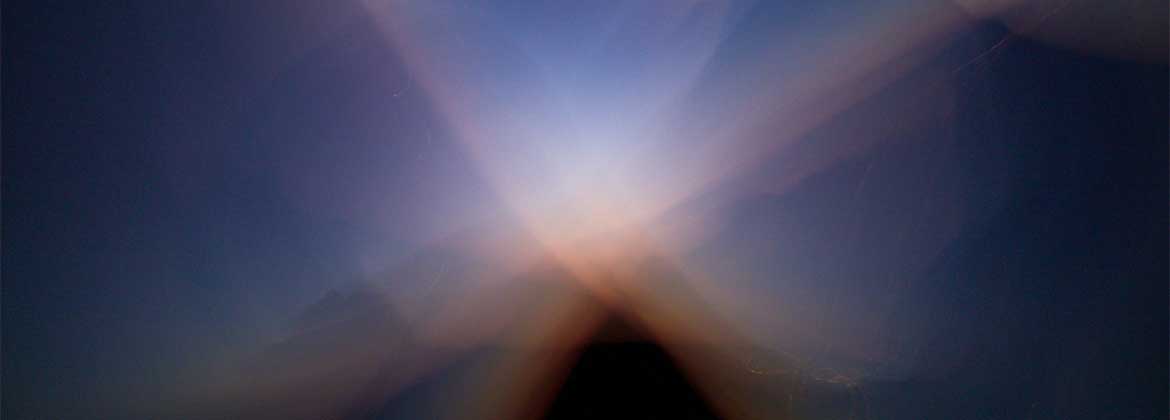Astronomical ephemeris – April, 2021
Astronomical ephemeris – April, 2021


For a long time man has been looking to the sky as a way to understand the life that surrounds him and learn more about himself. Astronomical ephemerides serve to accompany the main astronomical events such as solstices and equinoxes, asteroid and comet passages, eclipses, planetary concealments by the Moon, among other events.
Appreciating astronomical scenarios that don’t require any special instrument for observation except your eyes can be very rewarding, even inspiring.
Moon phases as seen in the Northern Hemisphere

April 4 – Last Quarter
April 11 – New Moon
April 20 – First Quarter
April 27 – Full Moon
April 17
Conjunction between Moon and Mars
Between 6:20 pm and 8:30 pm (Brasilia time-3UTC) on April 17, the planet Mars and our natural satellite, the Moon, will be very close to each other in the cosmos, according to our observation point, and will form the so-called conjunction phenomenon, reaching almost a concealment, because the distance between them will be only 7′. However, in some parts of the world, as shown in the graph below, we will have a concealment, which shows that the observation point is an important factor in the designation of astronomical phenomena.
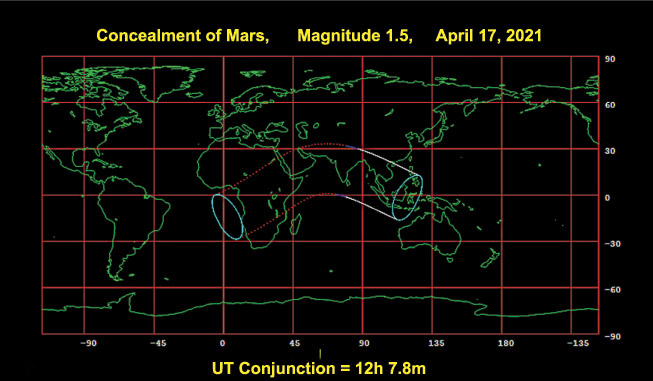
The Moon will be on the fifth day of its New phase; therefore, its illumination will be only about 21%, and it will also allow us to observe the stars Betelgeuse, in the constellation of Orion, and Aldebaran, in the constellation of Taurus.
Moon and Mars will be in the constellation of Taurus and their magnitudes will be -9.9 and 1.5, respectively. Because the distance between the celestial bodies is so small, the phenomenon will fit within the field of view of a telescope or binoculars, as well as the naked eye.
To see this ephemeris, look more or less 33º above the northwest horizon, in the direction of the constellation of Taurus, between 6:20 pm and 8:30 pm (Brasília time -3UTC).
Observable around the world.
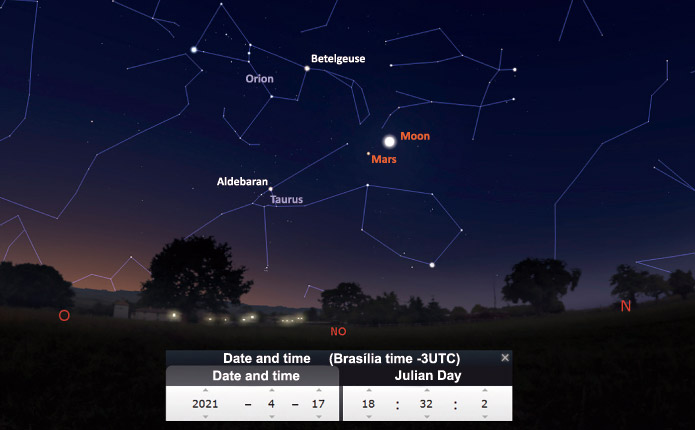
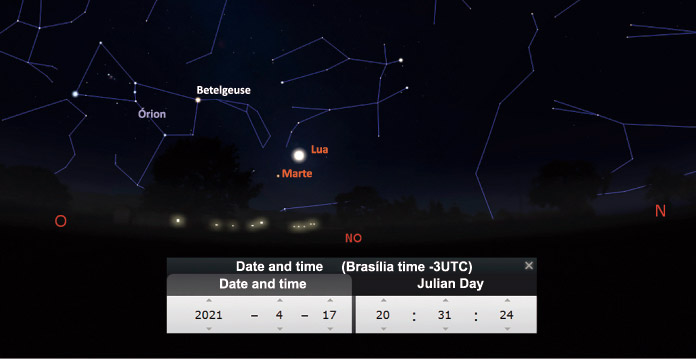
April 22
Lyrids Meteor Shower
The Lyrids, a phenomenon considered a medium intensity shower, are one of the oldest known meteor showers. The first record of its observation was made by the Chinese in 687 BC.
They take place between the 16th and 30th of April, when the Earth will pass through the trail of debris left by Comet Thatcher – discovered by A.E. Thatcher on April 5, 1861 – a comet that takes 415 years to orbit the Sun and which may be seen again here on Earth in 2276. The moment of greatest activity will be on April 22, when an average of 10 to 20 fast (non-persistent tails) and bright meteors per hour can be seen.
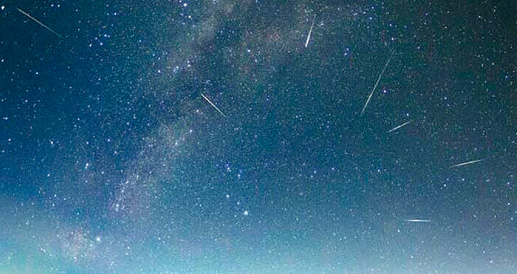
Its radiant – point from which it seems to originate and which gives the shower its name – is in the constellation of Lyra, the harp, where Vega, the fifth brightest star in the night sky, is located.
The Lyrids meteor shower is better viewed in the dark hours of the northern hemisphere – after sunset (which will be 68% full that day) and before dawn – between 2:00 am and 6:00 am (Brasília time -3UTC). But it can also be seen from the southern hemisphere, only with lower rates of meteors.
To observe it, look for the star Vega, to the northeast, in the constellation of Lyra, but do not fix your gaze on it because its brightness will make the meteors tails shorter.
Observable around the world.
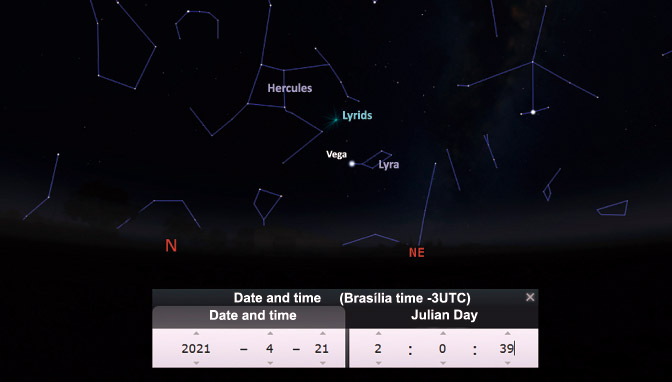
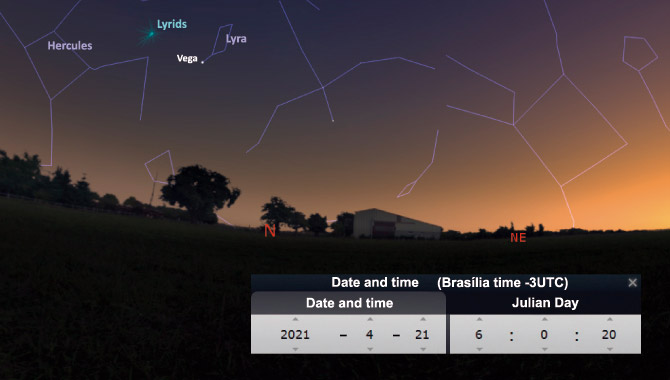
April 27
Super Moon
April will bring the first supermoon, of the three consecutive ones that will take place in 2021.
This phenomenon occurs because there are variations in the distance between the Moon and the Earth since our planet is not exactly in the center of the lunar orbit, and the lunar orbit is not a circle, it’s an ellipse.
When our satellite is closer to Earth, we call this the point of perigee – around 357,000 km; and, when it’s farthest away, at its apogee – around 405,000 km.
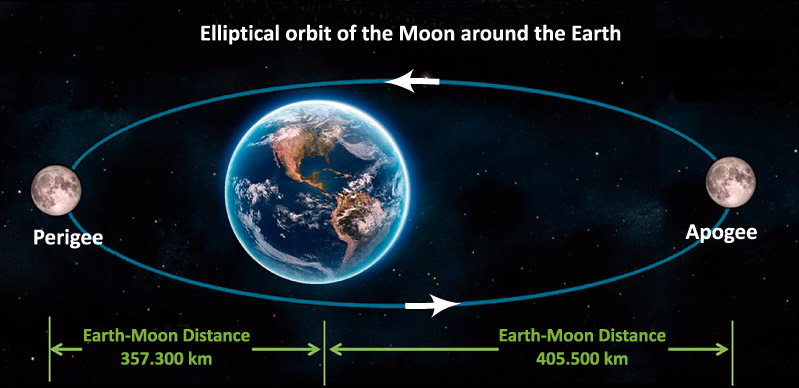
The super moon astronomical event occurs at the moment when the Moon, in its full phase, is at the perigee, its moment of closest approach to our planet.
On the 27th, at 3:31 am (Brasília time -3UTC), the full moon begins and, 12 hours later, at 15:25 (Brasília time -3UTC), the Moon reaches the perigee. At night, it means seeing it with an apparent diameter 7% larger and brightness 15% more intense.
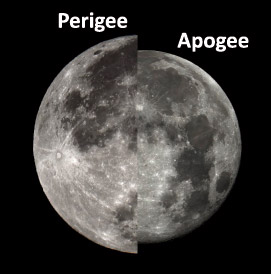
The highlight, in fact, is in the increasing brightness of our satellite and not in the increasing of its size.
The term supermoon was first used in 1979 by astrologer Richard Nolle, who was looking for a popular way to describe the lunar perigee in its full phase, but the official name for the phenomenon in astronomy is Perigean Full Moon.
Observable around the world.
Sources: jpl.nasa.gov/calendar/ solarsystem.nasa.gov / UFSC Observatory / Dietrich Schuel-USP Observatory / Stellarium.org / rmg.co.uk / astro.if.ufrgs / earthsky.org / space.com / timeanddate.com
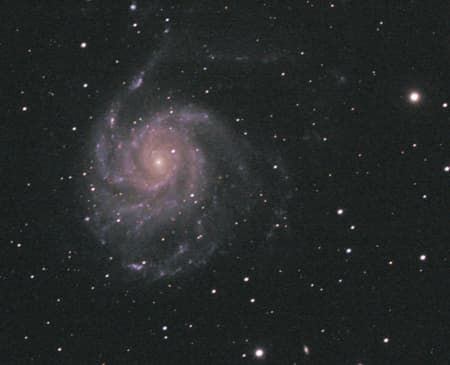
Astronomy is one of the 12 sectors that make up the PRÓ-VIDA Laboratory Department, responsible for developing studies, research and scientific experiments related to diverse themes, as well as field activities and lectures.

Astronomy is one of the 12 sectors that make up the PRÓ-VIDA Laboratory Department, responsible for developing studies, research and scientific experiments related to diverse themes, as well as field activities and lectures.




